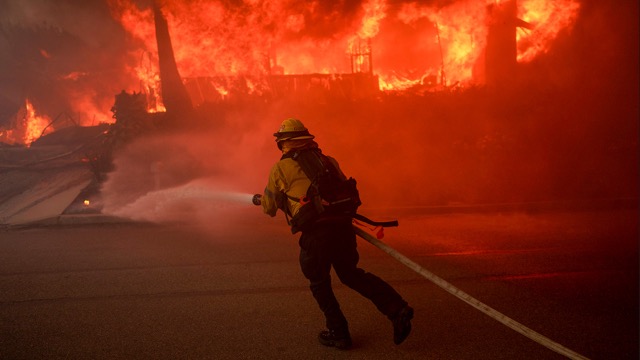January Fires
By Julie Cart, CalMatters
As climate change warms the planet, wildfires have become so unpredictable and extreme that new words were invented: firenado, gigafire, fire siege — even fire pandemic. California has 78 more annual “fire days” — when conditions are ripe for fires to spark — than 50 years ago. When is California’s wildfire season? With recurring droughts, It is now year-round.
Nothing is as it was. Where are the worst California wildfires? All over. Whatever NIMBYism that gave comfort to some Californians — never having a fire in their community before — no longer applies to most areas.
Los Angeles County is the latest victim. At least 24 people have died in the Palisades Fire along the coast in Los Angeles and the Eaton Fire in the foothills of the San Gabriel Mountains. All of Southern California is experiencing drought conditions, with close to zero rainfall since May, and severe Santa Ana winds.
Southern California’s coastal fires typically have to be driven by desert winds. But no longer. Vegetation along the usually moist coast is often so parched that it doesn’t need winds to fan wildfires.
Also, in the far north, California’s so-called “asbestos forests” have lost their immunity. Massive fires tore through dense, moist rainforests where climate change chased away the region’s protective layer of fog and mist.
What causes California’s wildfires? Arson and power lines are the major triggers. A 2022 audit showed that utilities aren’t doing enough to prevent fires. But lightning-sparked fires, like the one that burned Big Basin park, are a fairly recent trend. Unpredictable and hugely powerful lightning storms — tens of thousands of strikes in a span of days — bombard vulnerable landscapes. Scientists say to expect more lightning as the planet warms. And, aided and abetted by drought, more than 163 million trees have been killed by drought or insects.
The job of battling these larger, more stubborn California wildfires has become more costly, complicated, fearsome and deadly, straining the state’s already overworked firefighters.Insurers keep raising premiums and canceling policies, even if homes have been fire-hardened.
California’s landscape evolved with fire. What remains is for its inhabitants to adapt to the new reality. And that requires yet another new term: Welcome to the “Pyrocene,” coined by fire scientist Stephen J.Pyne. The age of fire.

For More Fire Season News Visit www.zapinin.com/fire-season

